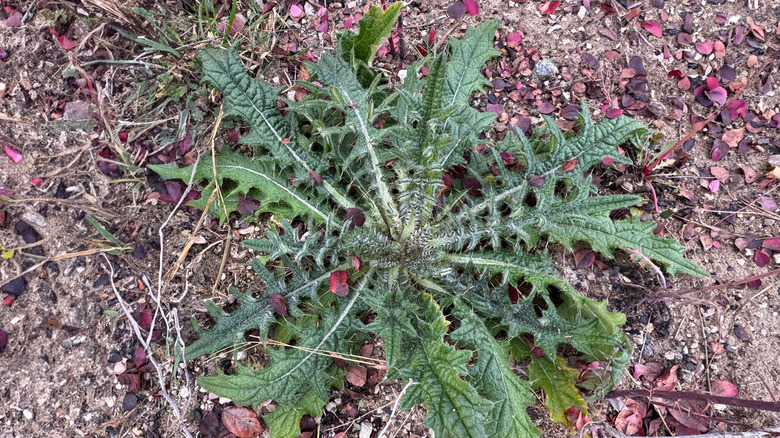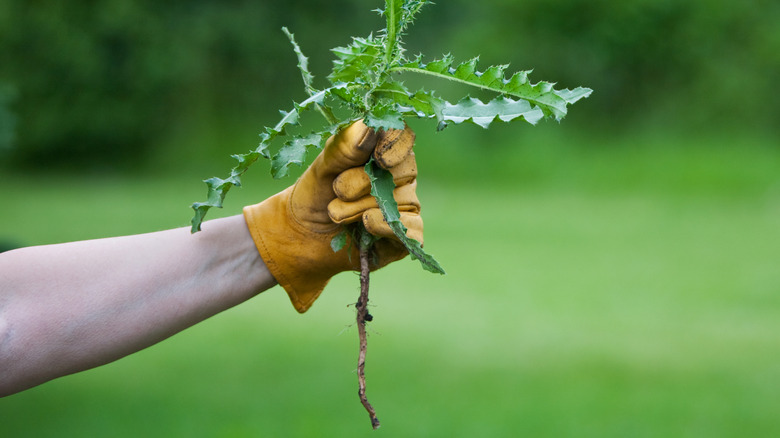The Correct Way To Pull Stubborn Thistle Weeds By Hand
We may receive a commission on purchases made from links.
There are those who feel that thistles should be encouraged, and they have a point. Hummingbirds love the native plant, and it can add gorgeous character. There's a problem, though. Thistles can spread rapidly. They will out-compete vegetables and flowers and soon make a mess of a lawn. Non-native species can be particularly invasive, and in particular, Canada thistle poses a major threat to your garden.
So unless you are an expert, the best course of action is to remove them. If you catch them relatively young, you can do it successfully by hand, thus avoiding the need for sprays that might either be toxic or could harm surrounding plants. The correct way to pull thistle weeds by hand is to get to the base of the plant where there are no spiky leaves. Although you may be able to do this with bare hands, it's better to wear strong garden gloves for protection. Simply grasp the stem where it meets the ground, and pull upwards.
It can work, but there are those that say you should never pull thistle weeds by hand. This is because any part of the root that remains can regrow. What's more, Canada thistles spread not just by seed but also via horizontal roots (called rhizomes) that grow underground. When you pull a thistle weed by hand, you may not know if you got the whole root or not.
Other effective ways to control thistle weeds
Systemic herbicides (typically glyphosate), which travel through the root system and kill the whole plant, can be very effective. However, the potential long-term health hazards of these herbicides have led to many people looking for safer, more environmentally-friendly alternatives.
Digging up the roots is one approach, and tools like Grampa's Weeder can work well if the thistle is young and the roots are relatively shallow. However, once the taproots develop, they may simply be snapped off and the weed will pop up again later. Vinegar is a way to naturally banish prickly thistle weeds and is non-toxic to animals and people. Unfortunately it isn't selective, so overspray will damage any other plants nearby. Extensive use will also alter the acidity of the soil, potentially inhibiting the growth of other plants.
Some people suggest just cutting the plant off at ground level. The principle is that without the leaves, the plant cannot photosynthesize (convert sunlight to energy) and will starve as a result. Although this is true, the thistle weed will usually start to grow again and will need to be cut off multiple times before it eventually dies. The bottom line is that whatever method you choose to deal with stubborn thistle weeds, it is unlikely to be a one-and-done deal. It is one of those garden chores that will almost certainly be an ongoing battle.

